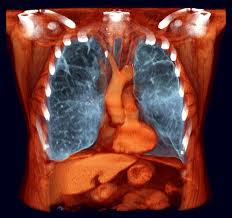Sep 27, 2011 | By Tim Stoddart
What is Opium? – How Does It Effect The Body and Brain?
Addiction ResourcesOpium Street Names
Buddha, Chillum, Chinese Molasses, Ze, Emerald City, Aunti/Aunti Emma, Easing Powder, Big O, Hop, Midnight Oil
Overview
 Opium is a highly addictive narcotic drug that comes from the unripened seedpods of the poppy plant. In traditional cultivation methods, the unopened pods of the poppy plant are slit open, and the sap that seeps out dries on the surface of the pod. When it dries, it forms a latex-like substance that is yellowish-brown in color. Opium is most commonly as a black or brown block of tar-like powder, but it can also be found in both liquid and solid forms.
Opium is a highly addictive narcotic drug that comes from the unripened seedpods of the poppy plant. In traditional cultivation methods, the unopened pods of the poppy plant are slit open, and the sap that seeps out dries on the surface of the pod. When it dries, it forms a latex-like substance that is yellowish-brown in color. Opium is most commonly as a black or brown block of tar-like powder, but it can also be found in both liquid and solid forms.
The alkaloids that are present in opium include morphine (which is used to create heroin) and codeine among others. Morphine is the main component of the drug, comprising of 12% of the plant. It is the chemical compound most responsible for its’ narcotic effects. Morphine works on the brain by mimicking the effects of neurotransmitters called endorphins. Endorphins are produced by the central nervous system as well as the pituitary gland and are responsible for pain management and creating feelings of calm and well-being.
In its purest form, opium is far less dangerous than opiates that are derived from the poppy plant, but an increase in the number of users who are becoming addicted to heroin, prescription painkillers and various other opium derivatives has led to the need for improved education about the dangers of this class of drugs.
The History of Opium
The origins of opium date as far back at 3400 B.C. where the poppy plant was first cultivated in Southeast Asia. Referred to by the ancient Sumerians as “the plant of joy,” it was used for both ritual and medical purposes. Thereafter, cultivation and use of opium spread to Egyptian and Roman cultures. As word spread about the power of opium, the poppy plant became grown and harvested on a more widespread basis in order to expand the market and decrease its cost. Over time, opium made its’ way through the Silk Road trading route as well as China.
 In Chinese culture, opium was typically used for recreational purposes, but it didn’t become more widespread until the 17th century when the drug became more accessible and less expensive. At that time, the common method of use involved mixing opium with tobacco and smoking the mixture. As it’s use became more widespread throughout China, opium addiction starting to become more noticeable. By that point, more than 1/3 of Chinese males were smoking the substance on a regular basis. While negative effects were being observed, most users did not place any concern on the growing consequences that were to come as a result of using the drug. The British in-fact, encouraged its use in order to bolster trade between the two countries.
In Chinese culture, opium was typically used for recreational purposes, but it didn’t become more widespread until the 17th century when the drug became more accessible and less expensive. At that time, the common method of use involved mixing opium with tobacco and smoking the mixture. As it’s use became more widespread throughout China, opium addiction starting to become more noticeable. By that point, more than 1/3 of Chinese males were smoking the substance on a regular basis. While negative effects were being observed, most users did not place any concern on the growing consequences that were to come as a result of using the drug. The British in-fact, encouraged its use in order to bolster trade between the two countries.
Confiscation of opium by the emperor during the mid-1800’s led to the “Opium Wars” between the two nations and by this time the opium trade was nationwide and was massed produced for domestic use. In order to fund their ever-increasing desire for Chinese produced tea, Britain began smuggling opium to China. This resulted in a soaring addiction rate among the Chinese and led to the Opium Wars of the mid-1800’s. Opium use was introduced to the United States with the influx of Chinese immigrants who came to work on the railroad and for the great California Gold Rush. These immigrants brought the practice of smoking opium with them, and when many settled in the Chinatown district of San Francisco, opium dens were established and spread eastward towards New York City.
In the 20th century, opium was prohibited from many countries and its’ regulation would greatly reduce the level of opium use. However, this regulation would also lead to the production of the drug for illicit street purposes. While the majority of poppy production occurs in Central Asia in countries like Afghanistan, Turkey and Pakistan, opium is also grown in countries such as Colombia and Mexico.
Opium or the poppy plant has been widely referenced in movies and literature but the most famous instance of this is the use of the poppy plants in “The Wonderful Wizard of Oz,” in which the wicked witch used them to put Dorothy and her friends to sleep before they reached the Emerald City.
Statistics
Recreational use of opium is not as popular as it was 100 years ago. The availability of heroin has replaced the demand for the substance in most western countries. It has been claimed that 41,000 tons of opium was produced in 1906, but in 2002 there was only 5,000 tons produced primarily for legal purposes. 70% of opium production occurs in Afghanistan. Most of the illegal opium is now turned into heroin.
 The Drug Enforcement Agency (DEA) has classified opium as a “Schedule II” drug. This means the drug is highly addictive but can be obtained through written medical prescription. Most opium users, however, do not have a prescription and are using opium recreationally and illegally.
The Drug Enforcement Agency (DEA) has classified opium as a “Schedule II” drug. This means the drug is highly addictive but can be obtained through written medical prescription. Most opium users, however, do not have a prescription and are using opium recreationally and illegally.
How is Opium Administered?
Opium can be administered in a variety of ways. The drug can be smoked, injected intravenously, mixed into teas, or it can be taken orally in pill form. Opium can also be used in combination with other illicit drugs. For example, “Black” is the combination of opium combined with methamphetamine and marijuana, while “Buddha” is the combination of opium and high potency marijuana. Opium can also be incorporated into baked goods and other food items. No matter the method of administration, opium is a highly addictive and dangerous drug that potentially present life-threatening consequences.
What Does Opium Do To The Brian?
 Opium affects the brain as the drug binds to several receptor sites that control physiology, mood, movement, breathing, body temperature and digestion. Opium makes these neurotransmitters react as they would under extreme stress. Using the drug also affects emotions and motivation. Opium abuse can change brain activity, hence, an individuals behavior is changed. Addiction changes brain activity by changing how nerve cells communicate. This leads to uncontrollable, compulsive drug use and dependence. Opium addiction can also change the shapes and synapses of the brain, therefore chronic opium addiction leads to structural changes in the brain.
Opium affects the brain as the drug binds to several receptor sites that control physiology, mood, movement, breathing, body temperature and digestion. Opium makes these neurotransmitters react as they would under extreme stress. Using the drug also affects emotions and motivation. Opium abuse can change brain activity, hence, an individuals behavior is changed. Addiction changes brain activity by changing how nerve cells communicate. This leads to uncontrollable, compulsive drug use and dependence. Opium addiction can also change the shapes and synapses of the brain, therefore chronic opium addiction leads to structural changes in the brain.
The Short-Term Effects of Opium
 Opium can slow down the parts of the brain that control automatic body functions such as breathing, digestion, allergic reaction, and feeling pain. Overall, there is a danger of overdose with first use. As a person’s breathing can slow too much, or even stop.
Opium can slow down the parts of the brain that control automatic body functions such as breathing, digestion, allergic reaction, and feeling pain. Overall, there is a danger of overdose with first use. As a person’s breathing can slow too much, or even stop.
The short-term effects of using opium are similar to those seen with alcohol, Xanax and barbiturates and can include dehydration and dry mouth as well as impaired cognitive functioning, which can cause users to act impulsively. Once the user has ingested the drug, they begin to feel euphoria or a high feeling of pleasure. Particularly, as the brain floods with opium, body functions slow down. A person feels drowsy and like they can enter a dream-like state.
Additional short-term effects can include:
- Falling asleep or “nodding off”
- Pin like pupils
- Constipation
- Nausea, vomitting
- Body temperature changes
- Slow breathing
The Long-Term Effects of Opium
The most common long-term effect of opium use is the development of a tolerance in which the user will need to take more of the drug to produce the same desired effect. The quest for pleasure becomes a compulsion and motivation to acquire more opium. As a result, drug seeking behavior increases often leading a person to neglect other aspects of their health. Long-term effects can be dependent on how the user administers the drug. For example, those who smoke opium is extremely damaging to the lungs and also leads to heart damage and other cardiovascular-related ailments and diseases.

Smoking opium can also lead to significant and lifelong liver and kidney damage and can also cause renal failure. Additionally, if the drug is injected or if derivatives of the drug are injected there could be severe damage to the veins. If opium is injected with contaminated needles the risk of contracting infectious diseases such as hepatitis and HIV significantly increases. Contaminated needles can also lead to abscesses of the skin and can result in amputation.
Additional long-term effects can include:
- Weakening of the immune system causing the user to fall sick more often
- Chronic skin flushing and itching due to the drug releasing histamines – causing allergic reactions
- Increased anxiety
- Increased pain
- Impotence
- Mental fog – even when not using the drug
- Risk of using stronger opiates
- Increased anger and irritability
- Chronic constipation
Opium Overdose
Opium overdose can occur when an individual smokes, snorts, or ingests too much opium. This type of overdose can also occur when an opium derivative such as heroin or morphine is injected intravenously. Many of these symptoms can occur in mild form, however, as symptoms persist and become more severe, there becomes a need for medical intervention to ensure safety of the individual that may have overdosed on the drug.
Some of the most easily spotted overdose symptoms include:
- Dilated pupils
- Drowsiness
- Labored breathing
- Cold or clammy skin
- Confusion
- Reduced heartbeat
The dangers of opium overdose include:
- Heart attack
- Coma
- Reduced circulation
- Brain damage
- Labored breath
- Death
If you suspect that you or someone you know has overdosed on opium or an opiate such as heroin or morphine, do not hesitate. Seek immediate medical attention by calling 911!
Opium Withdrawal
 Once opium use has been prolonged, the body builds a tolerance of the drug, which ultimately leads to addiction. This can cause a range of physical and psychological dependence issues. When the user stops using the substance, the body expects more of the drug. When ceasing opium use occurs after an extended period of time, it can lead to a number of adverse consequences. These body responds with withdrawal symptoms that have been described as flu-like in nature.
Once opium use has been prolonged, the body builds a tolerance of the drug, which ultimately leads to addiction. This can cause a range of physical and psychological dependence issues. When the user stops using the substance, the body expects more of the drug. When ceasing opium use occurs after an extended period of time, it can lead to a number of adverse consequences. These body responds with withdrawal symptoms that have been described as flu-like in nature.
The most common opium withdrawal symptoms include:
- Diarreha
- Sweating
- Vomitting
- Mood swings
- Sweats
- Stomach cramps
- Shaking
- Insomnia
These withdrawal symptoms are most often mild during the two days. However, they will peak around the third to fifth day. Those looking to quit opium will require medical detoxification in order to minimize the harm that can be caused by withdrawal. In order to aid this process, medications such as naloxone, and suboxone may be used.
Once the detox process is complete, patients can transition into formal treatment where through therapy they can uncover the underlying causes of their addiction. Residential, inpatient treatment is the best option for those addicted to opium and other opiates and opioids to receive the counseling and support they need to continue working a program of recovery while successfully maintaining near normal daily routines.
Signs of Opium Addiction
 It is vital for loved ones to understand the effects and spot signs of an opium addiction to help the user receive needed help. Many symptoms of opium addiction can be behavioral causing the user to act out irrationally or out of the ordinary. These symptoms should not be downplayed and may require immediate medical attention.
It is vital for loved ones to understand the effects and spot signs of an opium addiction to help the user receive needed help. Many symptoms of opium addiction can be behavioral causing the user to act out irrationally or out of the ordinary. These symptoms should not be downplayed and may require immediate medical attention.
Signs of opium addiction may include:
- Denial – Most of the time, someone who is in the grips of an opium addiction will deny their use. The user may be unwilling to admit there is a problem or that the drug is causing as many problems as there truly are.
- Obsession – When someone is addicted, the person becomes obsessed and fixated on the substance. They will talk about the drug regularly, spend excessive amounts of time planning, obtaining or using the drug, and will become preoccupied with use regardless of the financial, relational, or societal problems it may be causing.
- Lack of control – Instead of being able to smoke opium recreationally, those who are addicted will resort to using the drug everyday. They will ultimately lose control of the amount of the drug ingested. Once addiction sets in, the user will experience a lack of control and may be in denial about it.
- Relaxed state – Taking opium leads to a state in which the user will appear dreary or otherwise mellow. Along with the relaxed state, the result of opium use often is followed by behavioral patterns such as irritability and agitation.
- Compulsivity – Individuals’ who take opium will change their priorities to use the drug to matter what – regarless of location, timing or principles. Opium addiction may take over a person’s life and the person may engage in risky behavior such as driving under the influence or doing things that they would likely not do if they were sober.
The Importance of Treatment
 Opium addiction treatment helps people who live with opium addiction to quit using this dangerous drug and get back on track to a happy, healthy, and drug free life.Due to the severity of opium withdrawal, a proper medical detox is needed before one engages in a rigorous course of action to treat the underlying causes of the addiction.
Opium addiction treatment helps people who live with opium addiction to quit using this dangerous drug and get back on track to a happy, healthy, and drug free life.Due to the severity of opium withdrawal, a proper medical detox is needed before one engages in a rigorous course of action to treat the underlying causes of the addiction.
Opium addiction is often treated with behavioral therapies in either an outpatient or residential capacity. The type of treatment model preferred will depend on a person’s specific needs and will vary from person to person. A detailed assessment is generally performed by a highly trained professional prior to admission into a program in order to ensure the right fit. Complementary treatment methods, such as yoga, mindfulness meditation, art therapy, massage therapy, chiropractic care, fitness programs, and nutrition management, can all be included in an opium addiction treatment program. Each program should be specifically tailored to the person receiving care to improve recovery and overall health and happiness on a long-term basis.
Support groups are a great way of connecting peers with similar circumstances in order to provide encouragement and help to prevent relapse. Clients generally begin attending 12-Step or peer support meetings during treatment and continue attending them once they successfully complete their treatment program.
Often times, a user will relapse many times before he or she finally gets effective help that works, however it is not a requirement. Unfortunately, addiction is like many other medical conditions in that most patients only follow through with the treatment protocol about 50% of the time. The dangers of continuing to abuse opium are too significant to let treatment slip away – left untreated, opium addiction can lead to:
- Mental illness
- Physical health problems
- Menstrual irregularity
- Reduced sex drive
- Infection
- Coma
- Collapsed veins
- Death
As with all forms of addiction, addiction to opium and similar drugs such as heroin is a serious matter and requires professional intervention. Trying to quit opium on your own is strongly discouraged, and while the withdrawal symptoms themselves aren’t particularly life-threatening, they have the potential to become life-threatening depending on the amount used, duration used, the presence of other drugs in the body and other co-occurring medical issues.
Many side effects of opium addiction can elevate over time, while abstaining from drug use. However, treatment for opium addiction cannot fix all of the long term effects which is why it is imperative to seek help as soon as possible. As the addiction progresses, the protocol to treat the addiction as well as long term effects can become more invasive. If you or someone you know is abusing opium or any opium derivatives, SoberNation is here to help.
You can reach out to our 24 hour treatment hotline at: 866-317-7050



2 responses to “What is Opium? – How Does It Effect The Body and Brain?”